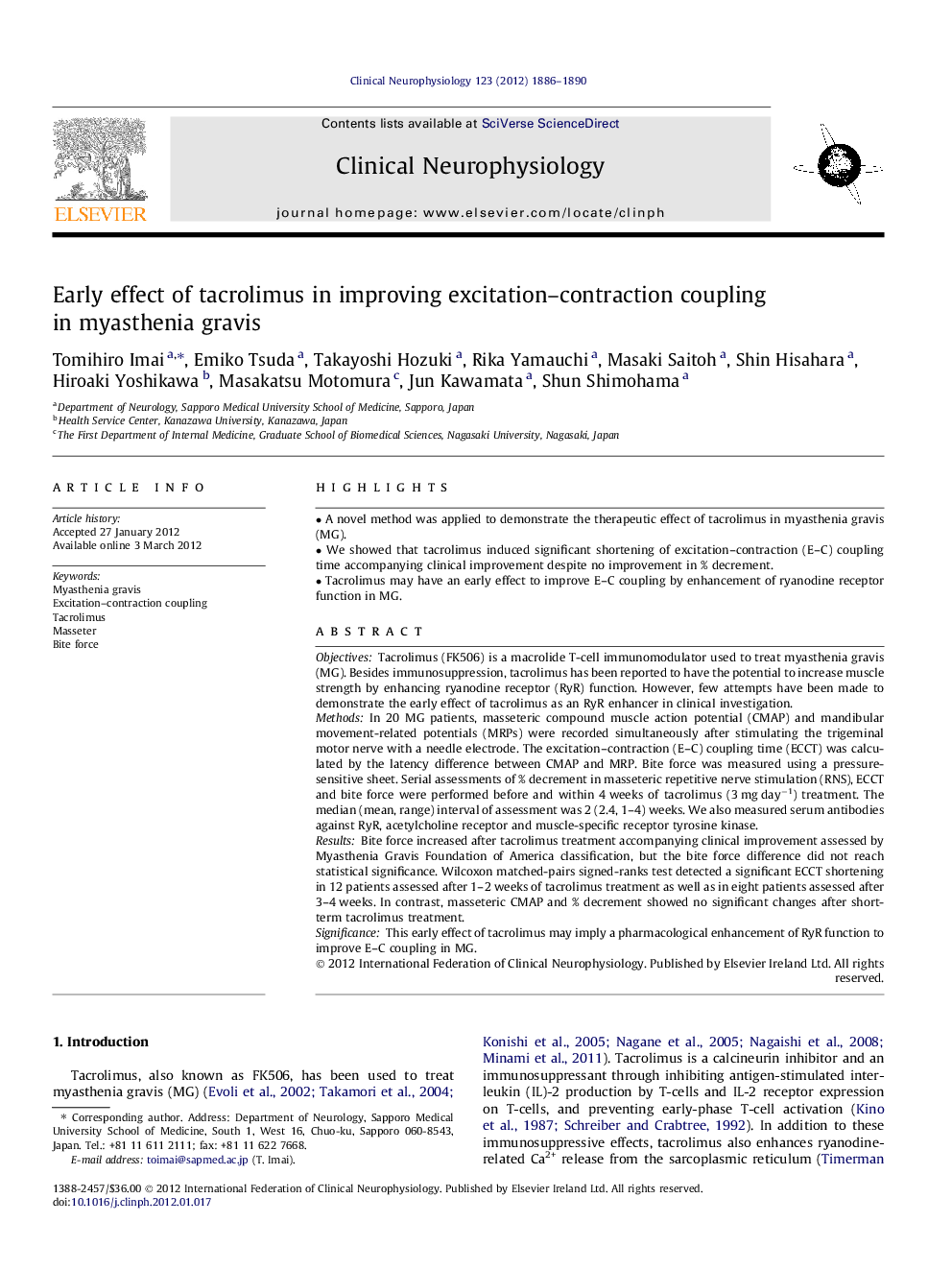| Article ID | Journal | Published Year | Pages | File Type |
|---|---|---|---|---|
| 6008792 | Clinical Neurophysiology | 2012 | 5 Pages |
ObjectivesTacrolimus (FK506) is a macrolide T-cell immunomodulator used to treat myasthenia gravis (MG). Besides immunosuppression, tacrolimus has been reported to have the potential to increase muscle strength by enhancing ryanodine receptor (RyR) function. However, few attempts have been made to demonstrate the early effect of tacrolimus as an RyR enhancer in clinical investigation.MethodsIn 20 MG patients, masseteric compound muscle action potential (CMAP) and mandibular movement-related potentials (MRPs) were recorded simultaneously after stimulating the trigeminal motor nerve with a needle electrode. The excitation-contraction (E-C) coupling time (ECCT) was calculated by the latency difference between CMAP and MRP. Bite force was measured using a pressure-sensitive sheet. Serial assessments of % decrement in masseteric repetitive nerve stimulation (RNS), ECCT and bite force were performed before and within 4 weeks of tacrolimus (3 mg dayâ1) treatment. The median (mean, range) interval of assessment was 2 (2.4, 1-4) weeks. We also measured serum antibodies against RyR, acetylcholine receptor and muscle-specific receptor tyrosine kinase.ResultsBite force increased after tacrolimus treatment accompanying clinical improvement assessed by Myasthenia Gravis Foundation of America classification, but the bite force difference did not reach statistical significance. Wilcoxon matched-pairs signed-ranks test detected a significant ECCT shortening in 12 patients assessed after 1-2 weeks of tacrolimus treatment as well as in eight patients assessed after 3-4 weeks. In contrast, masseteric CMAP and % decrement showed no significant changes after short-term tacrolimus treatment.ConclusionsTacrolimus induces ECCT shortening accompanying clinical improvement despite no improvement in % decrement within 2 weeks.SignificanceThis early effect of tacrolimus may imply a pharmacological enhancement of RyR function to improve E-C coupling in MG.
⺠A novel method was applied to demonstrate the therapeutic effect of tacrolimus in myasthenia gravis (MG). ⺠We showed that tacrolimus induced significant shortening of excitation-contraction (E-C) coupling time accompanying clinical improvement despite no improvement in % decrement. ⺠Tacrolimus may have an early effect to improve E-C coupling by enhancement of ryanodine receptor function in MG.
